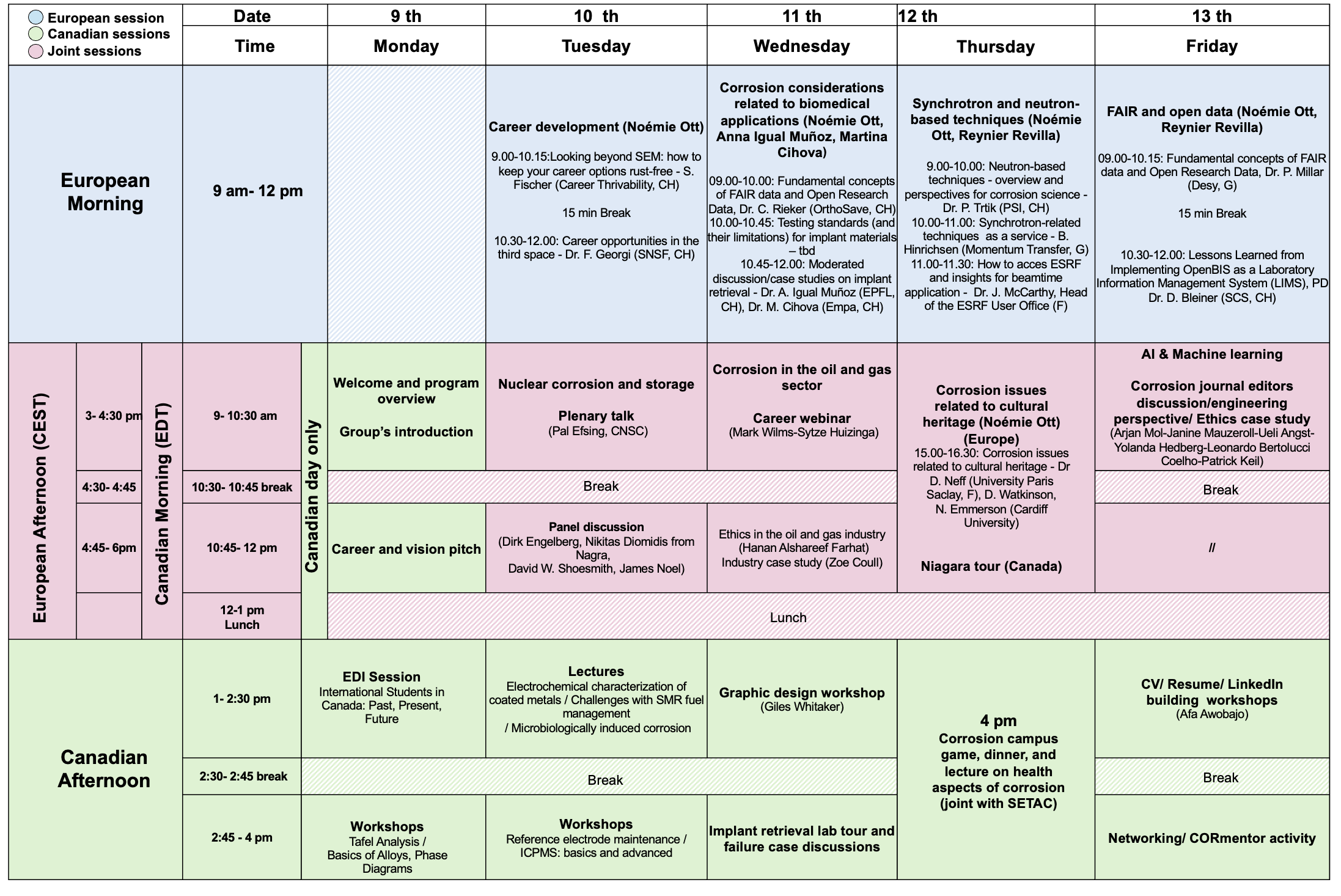Summer Corrosion Science Institute
The Summer Corrosion Science Institute (CSI) is a multi-day interdisciplinary training and collaborative event for CORRECT trainees, followed by Corrosion Awareness communication Training (CAT).
The next CSI will take place in Summer 2026 at the University of Calgary, Alberta.
Conference Highlights:
- Industry-relevant corrosion webinars
- AI and machine learning ethics
- Hands-on corrosion workshops
- Professional development sessions
- Exciting social activities
Who Should Attend?
- University students (undergraduates, graduates, postdocs) and faculty, interested in all things corrosion!
- Members of the corrosion industry, vendors, general industry.
- CRTE awardees.
CSI 2025 was held in collaboration with the Young European Federation of Corrosion and the CREATE CORRECT program. This hybrid event took place from June 9 to 13, 2025, combining in-person and virtual sessions to foster international collaboration and interdisciplinary learning.
You can access the recorded session videos here.
CSI 2025 Program Table

Last years CSI-CAT Videos of selected workshops:
CSI 2025: Western Univeristy and Young EFC, June 9-13, 2025
CSI-CAT 2024: University of British Columbia , June 18 – 21, 2024
CSI-CAT 2023: Western University, June 12 – 23, 2023
We acknowledge the support of the Natural Sciences and Engineering Research Council of Canada (NSERC).
Nous remercions le Conseil de recherches en sciences naturelles et en génie du Canada (CRSNG) de son soutien.


